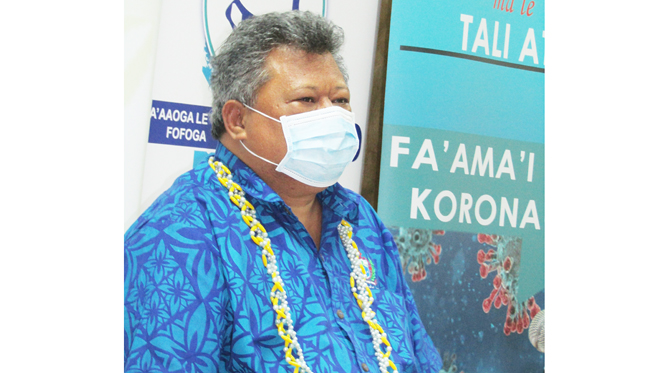By Martha Taumata Faavae
The 16-year-old male youth carrier of the CVOID-19 virus has been relocated for managed isolation at home.
He was still tested positive right up to the end of the official 21day period of isolation at the TTM Hospital last week.
Specimen sent for verification tests in New Zealand also confirmed the virus.
“The virus was weakening when we ran our last test on him,” Director General of Health, Leausa Dr. Take Naseri explained in a NEOC press conference today.
Leausa did not give specific reasons for the re-location but the carrier is a minor and remained healthy since testing positive on arrival.
He was, however, having problems being on his own, according to an earlier comment from frontline officials.
Leausa said they met with the mother who travelled with her son from the US but was isolated in a different quarantine site after testing negative.
He said the decision for home quarantine was reached after discussions with the boy’s mother.

“The same strict security arrangements and other health measures will apply for him at home as it was at the TTM Hospital,” Leausa assured.
“The village ‘pulenu’u’ and family neighbours where the youngster is isolated were all included in the final decision.”
Leausa added that the youth will also continue to be tested until it is safe to have him released from isolation.
The boy and his mother travelled from the US to New Zealand and then to Samoa on an Air New Zealand flight on the 12 of February 2021.
There were 161 passengers on the flight mostly from New Zealand and the 16-year-old youth was the only one tested positive on arrival.
All were isolated in groups at selected quarantine sites for the mandatory three weeks that officially ended last Thursday 4 March 2021.
The young carrier is asymptomatic according to health officials, who arrived without detection until the virus popped up in Samoa when tested on arrival at Faleolo International Airport.
He is the first person to have the virus appear for the first time on arrival. Earlier cases who tested positive on landing contracted the virus out of Samoa and were referred to as historic cases.
The reference was on the virus already at its dying stages from early treatment when the carriers reached Samoa.
